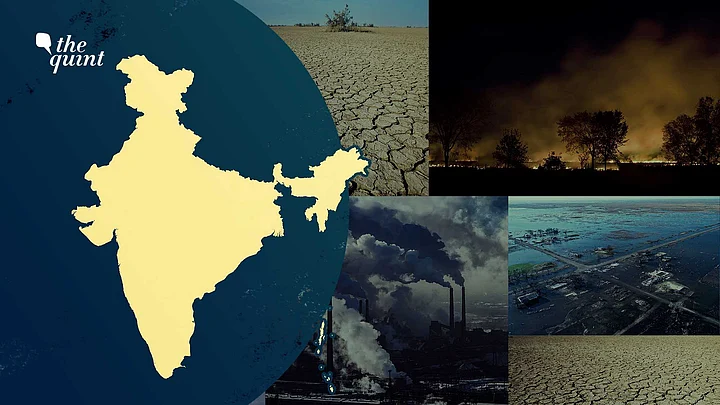Cities are a critical frontier in the fight against climate change. Existing urban areas are responsible for 75% of global carbon dioxide emissions, and the share could climb further as large swathes of Asia and Africa urbanise. In turn, the combined effect of climate change-induced resource scarcity and the high resource footprint characterising urban lifestyles threaten urban sustainability.
With a national urban population of more than 300 million, which is set to double between 2018 and 2050, India must determine how to make its cities more resource-efficient and less polluting. A fundamental urban transformation is a necessity as India strives to become a ‘net zero’ carbon-emitter by 2070 as per its COP26 commitment. And given that urban India is set to make massive investments in wastewater and solid waste management over the next five years under Swachh Bharat Mission Urban 2.0, it has a unique opportunity to test and scale solutions that work.
A circular economy – with its emphasis on minimising fresh withdrawal of resources and maximising waste prevention and recycling – could present a path forward.
Udaipur's HZL Project and Indore's Bio-Methanation Plant
Globally, early adopters of the circular economy framework, such as the cities of Berlin, Toronto, and New York, are beginning to reap benefits such as reduced waste generation, environmental pollution, and energy consumption, from it.
Fortunately, India has its own homegrown examples to learn from. One of these is the city of Udaipur, where the urban local body collaborated with Hindustan Zinc Limited (HZL) to develop a circular wastewater management system.
HZL required significant quantities of water to support its mining operations in a semi-arid region outside the city and the city needed a way to manage its wastewater. The complementary nature of needs led to a Public-Private Partnership (PPP) between the city, HZL, and the Rajasthan State-Owned Urban Improvement Trust in 2014.
The arrangement tasked the local government with developing the sewerage network, and HZL with constructing the Sewage Treatment Plant (STP). The latter had its initial capacity of 20 million litres per day (MLD) subsequently augmented to 60 MLD to meet growing demand. HZL is also responsible for the STP's operations and maintenance (O&M) for a period of 25 years in exchange for the rights to use the treated wastewater for the company's operations.
A second emerging example is the city of Indore, which has created Asia’s largest bio-methanation plant, capable of treating 500 tonnes of waste per day. It was inaugurated by Prime Minister Narendra Modi a couple of weeks ago. Developed at a cost of Rs 150 crores (USD 20 mn) under a Public-Private Partnership between the city, Ecosmart, and Proweps EnviroTech GmBH, the plant is expected to generate 18 kilolitres of Compressed Natural Gas (CNG) and 100 tonnes of compost daily.
The city plans to use a share of the produced bio-CNG to run its public buses and municipal vehicles and sell the remaining, along with the compost. Since bio-CNG is greener than traditionally derived fossil fuels, all else remaining the same, using it would reduce vehicular carbon emissions. The revenue derived from the sale of the two end-products, viz. bio-CNG and compost, has the potential could defray the project’s O&M costs and make it financially sustainable. With a large plant benefitting from economies of scale and Indore’s high adoption of solid waste source-segregation, the project is primed for success.
Tackling Behavioural Hurdles
Constitutionally responsible for the delivery and management of urban services, cities are best-poised to lead a bottom-up shift to circular urban economies. The application of the circular economy framework to service delivery systems must start at the planning stage itself. But designing infrastructure systems that enable resource recovery and recycling is not enough; cities must actively engage with all their potential collaborators in a circular economy – citizens, informal and small-scale service providers, industries, markets, and others – to identify behavioural roadblocks that can constrain success.
For example, separate collection and storage of biodegradable and non-biodegradable solid waste at the level of the household (or other generators) is the simplest and cheapest approach to waste segregation. If waste is mixed at the time of storage or during transport, it must be re-segregated it before it can be processed and recycled. Since re-segregation is typically imperfect, arduous, and costly, it can jeopardise a project's operational and financial sustainability.
To make the circular urban economy concept a success, cities would first need to examine the motivations of the participating actors and reorganise their incentives through rewards and regulations to drive desirable behaviours. This would require measuring the viability of projects in dimensions beyond financing.
Citizen acceptance, integration of informal livelihoods, the operational reliability of underlying technology in local contexts, and urban equity are just some of the factors to account for.
Second, since Indian cities are widely-varied in their socio-ecological contexts, developing a portfolio of service models that work and are scalable warrants experimentation.
Why Govt Should Create a Dedicated Programme
Although some national and state policies and programmes do nudge cities towards building circular economies within their specific thematic areas, a dedicated programme or policy from the government of India with a unifying vision of climate change mitigation and adaptation could inspire cross-cutting local action. The problem is big, but armed with lessons from an audit of past programmes and more flexibility of time and resources to local governments, urban India can usher in a sustainable transformation to secure our collective urban futures.
(Shubhagato Dasgupta is a Senior Fellow and Neha Agarwal is a Senior Research Associate at the Centre for Policy Research, India. All views are personal. This is an opinion article and the views expressed are the authors’ own. The Quint neither endorses nor is responsible for them.)
